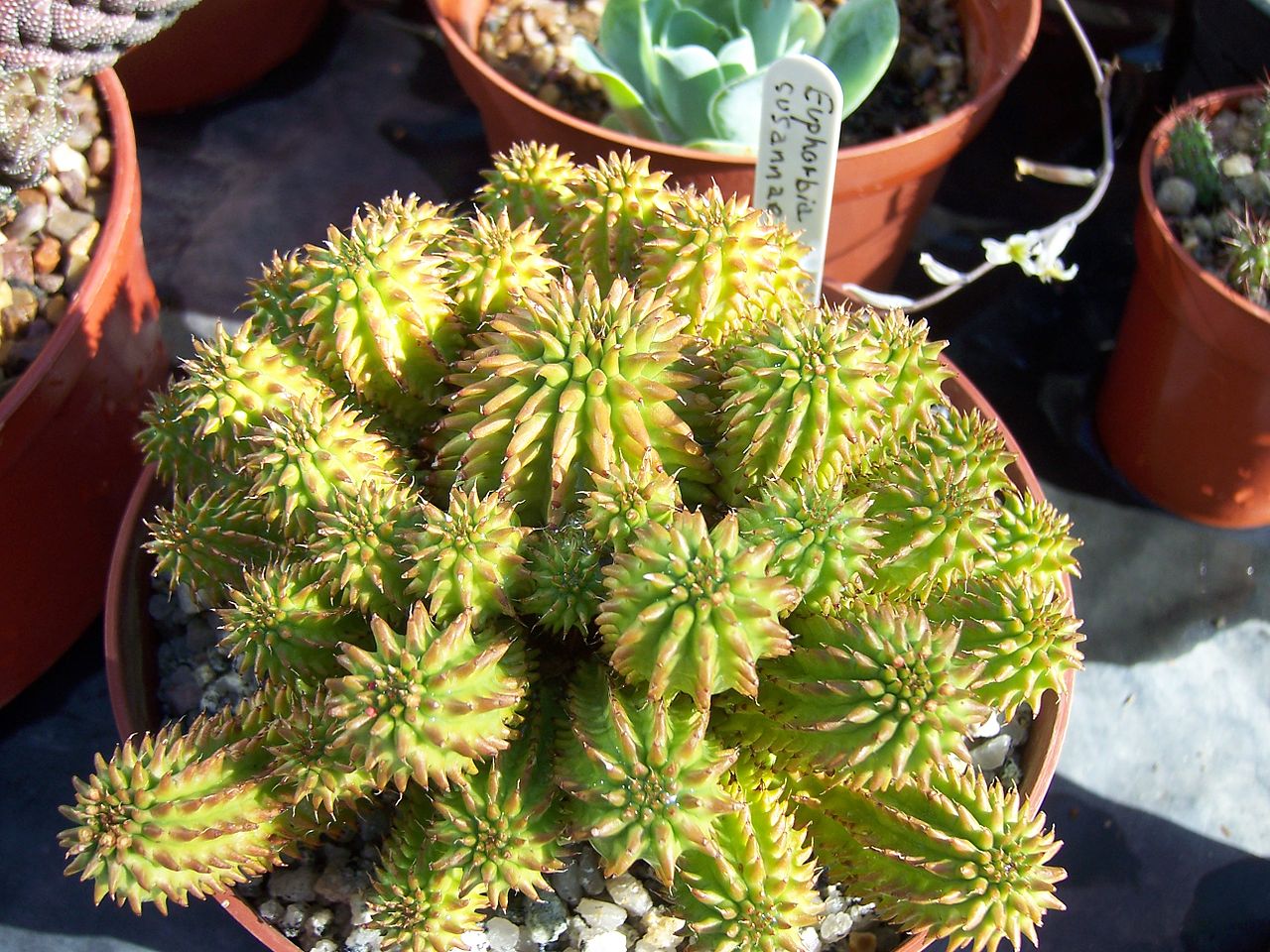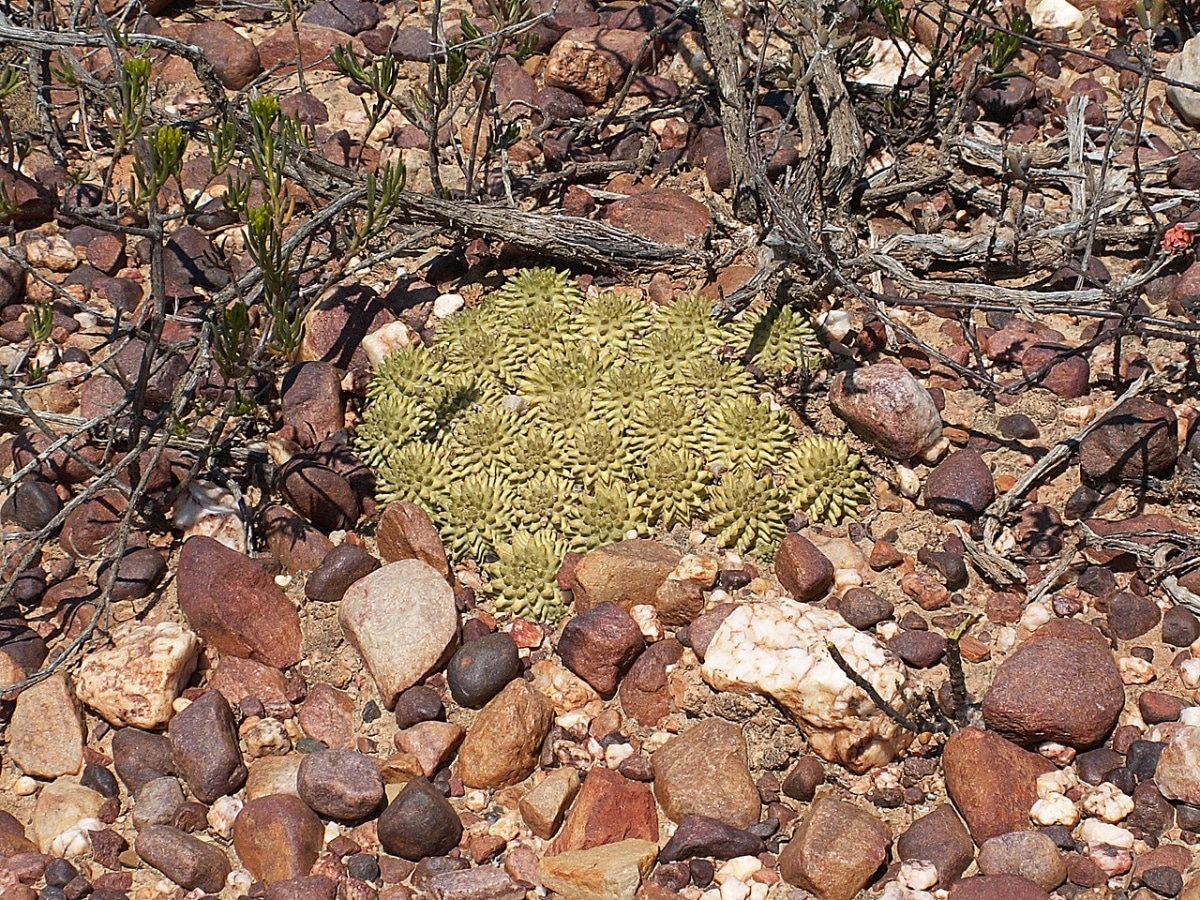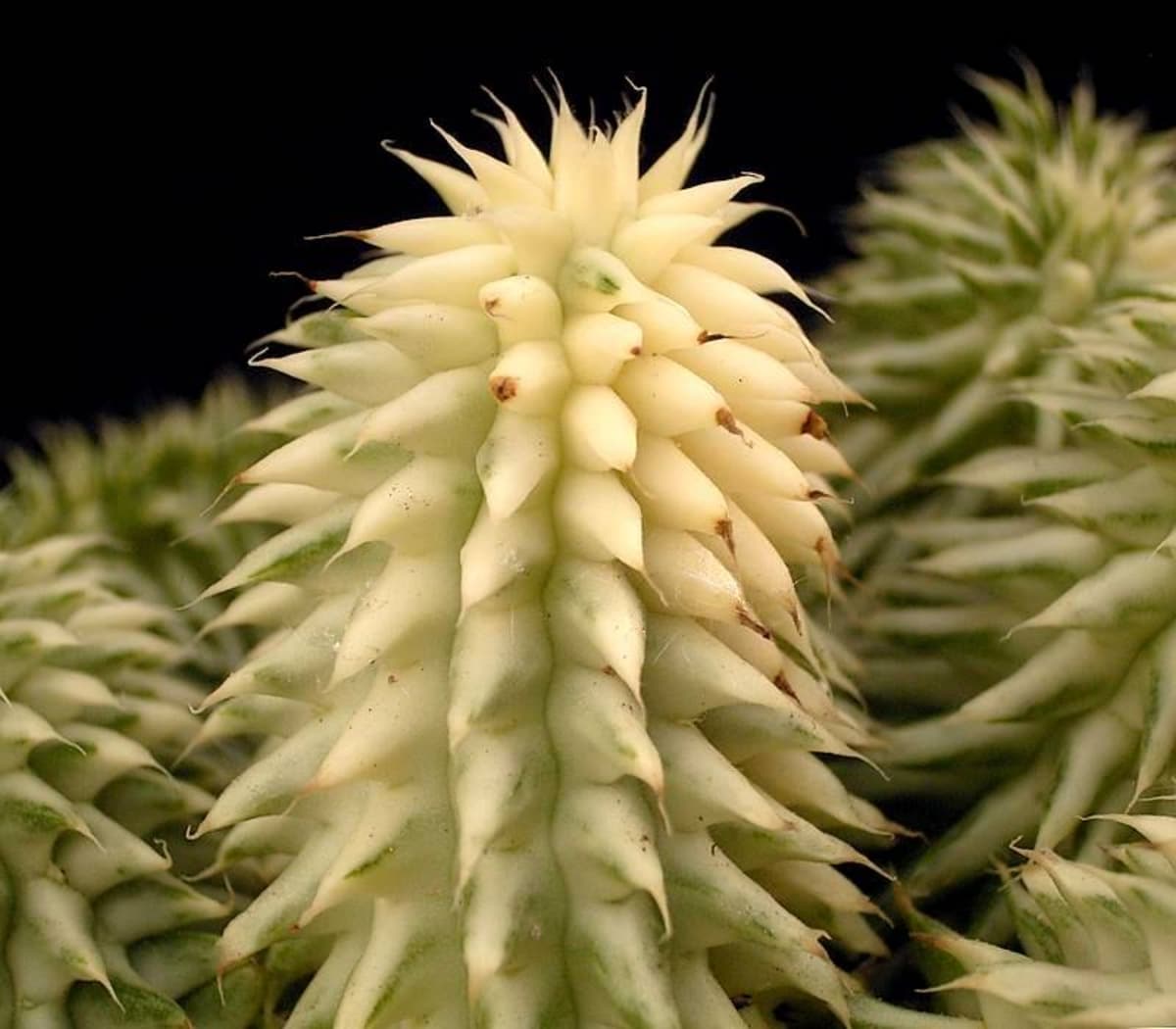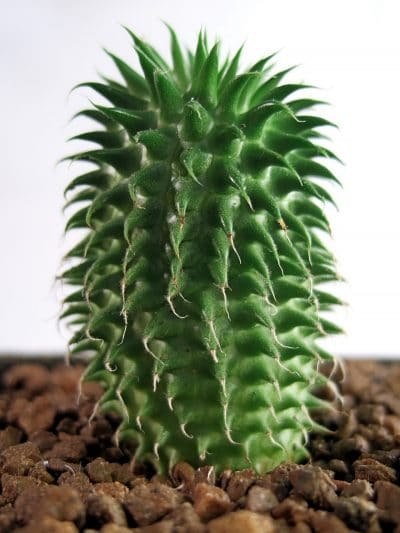
Image - Wikimedia / Jacopo Werther
The euphorbia genus is made up of several types of plants: herbaceous, trees and shrubs. One of the most popular species is the Euphorbia suzannae, which is a succulent can be grown in warm, tropical or subtropical gardens.
If you go to a nursery you will surely find it on the shelf where they have cacti and succulents, so it will surely be very easy for you to locate it. What's more, has features that make it easy to identify, as we will see below.
Origin and characteristics of Euphorbia suzannae

Image - Wikimedia / Winfried Bruenken (Amrum)
La Euphorbia suzannae is a herbaceous with green and succulent stems native to South Africa. It lacks thorns; however, it is protected by fleshy spikes, but don't worry they don't hurt. The total height of the plant is about 10-20 centimeters, although you have to know that it forms groups of about 20-25 centimeters wide.
Its flowers bloom in spring, and they are yellow. They arise from the top of the stems. But for this you need the climate to be warm, otherwise it will be difficult for you to do so.
How do you take care of yourself?
It is a plant that looks great in a planter with other small succulents, as well as in a wide pot and low on a table. Its growth rate is not very fast, so it does not have to be transplanted frequently, since we are also talking about a euphorbia that does not grow much.
Also, you have to know that suitable for those who have been caring for succulents for a short time and they want species that are easy to grow. It resists the drought, so much so that you can go on vacation for a few days since, when you return, you will find it just as you saw it last time.
But sometimes problems can arise, so what better way than to have a care guide handy to know everything that needs to be done to keep you healthy:
Location
As soon as we get home with your succulent you have to put it either in a room where there is a lot of light, or outside in semi-shade. The choice is yours, but we do recommend growing it indoors if there are frosts in your area; although it is also interesting to have it outside in spring and summer, and indoors during the cold months.
Soil or substrate

Image - Wikimedia / Frank Vincentz // Euphorbia suzannae f variegata
La Euphorbia suzannae it is a plant that does not like puddles. For this reason, It should be planted in light, sandy soils that filter water quickly. In very compacted soils the granites that form them are very close together, so the air does not circulate well. And this is a problem for the roots, since they can die asphyxiated.
If you choose to have it in a pot, it is also important that what we just mentioned is taken into account. There are substrates that are good for the plant, but there are many others that are not. Choose one that is lightweight and has pearlite, such as this, will facilitate the rooting of euphorbia; not so if it has a very high percentage of black peat.
Irrigation
Scarce. You have to water very little so that the plant does not soften. More or less, it will be done twice a week during the summer, and the rest of the year only when you see that the land is very dry. Of course, you have to be especially careful in winter, especially if it rains frequently and / or if the humidity is very high. In fact, it might be beneficial for her to water it just once every 15 days, or even every 20.
But beware: that you have to water it little does not mean that you have to pour a little amount of water. Nothing is further from reality. When it comes to watering you always have to pour it in until the earth is very wet; that is, until it comes out through is filtered and absorbed, to end up coming out through the holes in the pot.
Subscriber
In spring and summer it can be paid with any compost or fertilizer for succulents. Liquids are especially advisable if the plant is potted (such as this), since this way its effects will be noticeable earlier by being absorbed more quickly.
On the contrary, if it is going to be on the ground, you can use granulated or powdered fertilizers. Follow the manufacturer's instructions, so there will be no problems for sure.
Multiplication
It multiplies by seeds, and sometimes also by cuttings, although it is difficult to root. In any case, it is done in spring-summer.
Transplant
La Euphorbia suzannae It is a crass that it will need few pot changes throughout its life: only when purchased, and again two or three times more. The pot must have holes in its base, since this way when watering the water it will be able to come out. In this way, it is prevented from rotting.
Rusticity
Is sensitive to cold. It should not be kept outside if it falls below 15ºC.

Image - Flickr / Zruda
Did you know the Euphorbia suzannae?